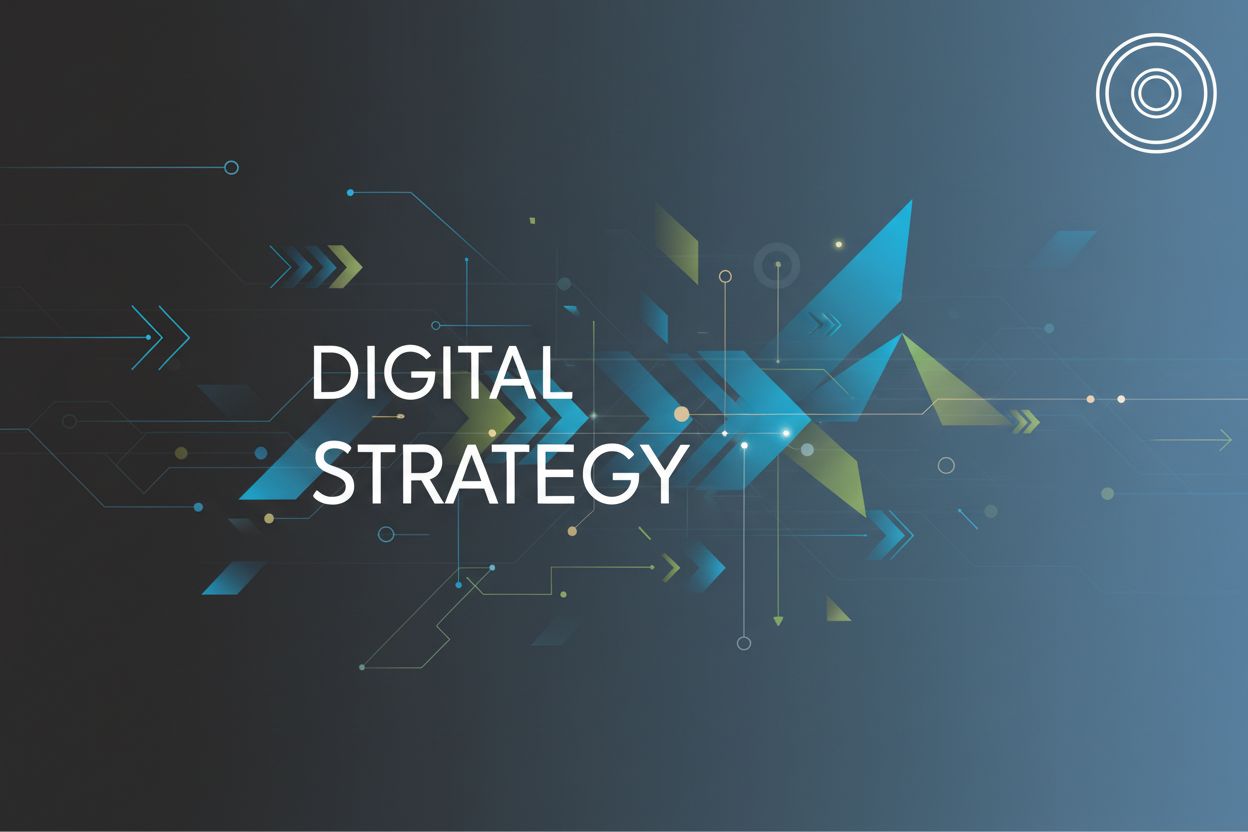Understanding Native Advertising: Functionality and Examples
TL;DR
What is Native Advertising?
Alright, so you're probably wondering what native advertising actually is, right? It's not like those pop-up ads from the early 2000s – thank goodness! But it can still be a bit tricky to nail down a solid definition.
Basically, it's advertising that tries to fit in, like a chameleon blending with its surroundings.
Here's the lowdown:
Blends in: Native advertising is designed to match the look and feel of the platform it's on. Think of a sponsored post on Facebook that looks just like a regular post from your friends or family. It's all about not sticking out like a sore thumb.
Provides Value: The goal isn't just to shove a product in your face. It's about giving you something useful or interesting. Maybe it's a helpful how-to article, an entertaining video, or an informative infographic. The idea is to offer value first, and subtly promote a product or service second.
Labeled: Honesty is key here. Native ads are usually labeled as "Sponsored" or "Ad" – you know, so you don't feel totally duped. It's about being transparent, even if it's a little discreet.
Okay, so how does this play out in the real world? Let's say you're scrolling through a news website, and you see an article about "5 Ways to Improve Your Home Office Ergonomics." Sounds useful, right? But then you notice a small "Sponsored by [Office Supply Company]" tag. That's a native ad. It's an article you might actually want to read, and it subtly promotes a brand that sells office equipment.
Now, you might be thinking, "Isn't that just content marketing?" Well, not quite. Native advertising is more about distributing content on other people's platforms, while content marketing is about creating valuable stuff on your own channels. And native ads are a pay-to-play kinda thing, while content marketing is more of a long-term strategy focused on organic reach and audience building.
Next up, we'll dive deeper into how native advertising works. This is important, so stick around!
How Native Advertising Works
Native advertising isn't just about sneaking ads past people, it's a whole process, right? So, how does this thing actually work? Let's break it down, step-by-step, without getting too bogged down in jargon.
First things first, you gotta plan. It's like, who are you trying to reach? What's your budget? What kinda creative stuff—images, videos, words—are you gonna use? Understanding your target market is key, cause you don't wanna waste money showin' ads to people who just won't care.
Next, you pick a dsp, or demand-side platform, to automate where your ads show up. A DSP is basically a piece of technology that helps advertisers buy ad space across a vast network of websites and apps. It connects advertisers with publishers through ad exchanges, allowing for automated, real-time bidding (RTB) to place ads on the most relevant placements for a specific audience.
Now things get interesting. The DSP talks to ad exchanges in real-time. It's like an auction where you're bidding for ad space on different websites. This automated bidding puts your ads on the best spots to grab your audience's attention. It's pretty neat, honestly.
Once your ad is out there in the wild, you gotta keep an eye on it. Are people clicking? Are they actually buying stuff? You track all these things—click-through rates, engagement, conversions—and then tweak your campaign to make it better. According to PowerAdSpy, with programmatic native advertising, you customize it for each user using machine learning and contextual advertising.
One of the big wins of native advertising is that folks are tuning out normal banner ads. People just ignore them, it's called "banner blindness". Banner blindness is the tendency for users to ignore advertisements that resemble banner ads. But, native ads? They're sneaky. They blend in. According to coschedule.com:
Native Ads have also been shown to influence purchase decisions on a more subconscious level since the advertising message is baked into the content and it's not where the reader is expecting to see an advertising message.
So, what's next? Well, now that you have a better idea of the process, we can dive into the different types of native advertising. It's always good to see how the pros do it, right?
Types of Native Advertising
Okay, so you know how sometimes you're just scrolling through a website, and everything just flows? You barely even notice the ads, right? Well, that's kinda the goal with native advertising, and there's more than one way to pull it off. Let's dive into some specific types.
Think of your favorite news site or social media platform. You're scrolling through your feed, and BAM! There's an article or post that looks just like everything else. But wait – it's labeled "Sponsored." That, my friend, is an in-feed advertisement.
- These ads show up right in the middle of the content you're already looking at—whether it's on a news site like Slate, or your Facebook feed.
- The key is, they try to match the site's style so they don't stick out like a sore thumb. It's all about that seamless integration.
- Clicking on these usually takes you to the company's website or blog, where you can learn more about whatever they're promoting.
Ever notice those ads at the very top of your Google search results? Yeah, those things. They kinda look like regular results, but they're paid for. Now, some people argue whether these really count as native advertising. The core of the debate is that search results are inherently a response to user intent – someone actively searching for something. This makes the "native" aspect different from content that's placed on a publisher's site where the user isn't actively seeking information from a specific brand.
- They're designed to blend in with the organic results, but they're still clearly marked as ads (usually).
- The Native Advertising Institute, for example, doesn't think they count, because a search engine isn't really "media."
- Regardless of what you think, they're a pretty common way for companies to get their products in front of your eyeballs.
You're reading an article on Fast Company, and at the end, you see a section that says "You Might Also Like..." or "Recommended For You." Those aren't just random suggestions.
- These sections are often dynamic, meaning they change based on what you've already been looking at or what the website thinks you're interested in.
- It's a way to keep you engaged and clicking through to more content.
- They're kinda sneaky, but if the recommendations are actually good, you might not even mind!
Promoted Listings
These are super common on e-commerce sites like Amazon or Etsy. When you search for a product, you'll see a bunch of results, and some of them will have a little "Sponsored" or "Ad" tag.
- They look just like the other product listings, making it easy for shoppers to find what they're looking for without feeling like they're being pushed an ad.
- They're great for brands that want to increase their visibility for specific products.
Sponsored Content
This is probably what most people think of when they hear "native advertising." It's content that's created by or for a brand, but published on a third-party website or platform, looking like regular editorial content.
- Think of articles, videos, or infographics that are published on a news site or blog, but are actually paid for by a company.
- The goal is to provide value and engage the audience, while subtly weaving in the brand's message.
Product Placement
This is a classic. You see it in movies, TV shows, and even video games. It's when a brand's product is featured within the content itself.
- It's not always obvious, sometimes it's just a character using a specific phone or driving a certain car.
- The key is that it feels natural to the storyline and doesn't disrupt the viewing experience.
And that's just a taste of the different forms native advertising can take. Next up, we'll look at the pros and cons.
Native Advertising: Pros and Cons
Okay, so we know native advertising is all about blending in, but what's the catch? Can't be all sunshine and rainbows, right? Like anything there are some sweet advantages, but also some potential downfalls to keep in mind. And honestly? It's worth knowing both sides before you jump in.
Highly Targeted Reach: You're not just throwing ads into the void. You're putting them where your ideal customer already hangs out. Think about it: a fitness brand sponsoring content on a health and wellness blog—smart, right?
More Brand Awareness: People are so used to blocking out regular ads. Native ads can sneak past that "banner blindness" and actually grab their attention.
Click-Through Rates are Higher: We're talking potentially way higher than your average display ad. So, people are actually clicking, which is the whole point, innit?
Unobtrusive User Experience: No one likes being bombarded with ads. Native ads mesh with the content, so they don't feel like an interruption.
SEO? Forget About It: Native advertising doesn't really boost your seo. It's more of a short-term play for visibility, not a long-term strategy for ranking in search results.
Reader Feels Duped: This is a big one. If folks feel like you tricked them into clicking an ad, it can backfire big time. Transparency is key, even if it's subtle.
Can Drain Your Wallet: Launching a native advertising campaign, especially with a big-name publisher, isn't cheap. It can cost a pretty penny, so you gotta make sure the ROI is there.
So, what's next? We've covered the good and the bad. Now, let's look at some actual examples of native ads that came out on top.
Examples of Successful Native Advertising Campaigns
Alright, let's get into some real-world examples of native advertising. It's one thing to talk about it, its another to see it actually work, you know?
Remember that Netflix and Wired collab? It's a sweet example, actually. It wasn't just some blatant commercial, but a genuinely interesting piece that kinda, sorta promoted the show.
- They interviewed experts on human immortality—a topic that tied into one of Netflix's shows. It walked that fine line of being both promotional AND genuinely interesting, which is hard to do, honestly. It's a good example of how to balance things.
Bushmills partnered up with Vice to create a microsite with city guides showcasing Irish pubs for St. Patrick's Day. I mean, come on!
- It's useful content for anyone looking for a place to celebrate, and it subtly promotes Bushmills whiskey, its actually useful.
Purina did a branded podcast with Slate. Not too shabby!
- The podcast covered dog-related topics, which is perfect for their target audience. It sells their products, but it also gives dog owners something they'd actually want to listen to, a win-win.
Now, Hyundai did something cool with National Geographic. This is something I can get behind.
- They created Augmented Reality experiences in National Parks, like Yosemite, talk about immersive! It's a smart way to tap into Nat Geo's audience who are all about adventure.
These examples show how native advertising, when done right, can be a pretty powerful tool. Up next, we'll look at what tools you can use to make native advertising easier.
Tools for Native Advertising
Native advertising can be tricky. How do you even do it effectively? You need the right tools, right?
- Taboola: This platform is great for connecting readers with content they might like, even if they didn't know it existed. It acts like a content matchmaker, suggesting articles and videos that align with a user's interests and browsing history.
- Outbrain: Similar to Taboola, Outbrain personalizes recommendations to connect marketers with their audience on major websites. It focuses on delivering content discovery and engagement across a wide network of publishers.
- Nativo: This tool is all about ensuring ads fit the individual design of each publication, so they blend in really well. It helps create a seamless user experience by adapting ad formats to the publisher's site aesthetic.
- Sharethrough: Sharethrough is a native advertising exchange that helps manage native ad strategies. It provides tools for publishers and advertisers to create, buy, and sell native ad inventory.
- PowerAdSpy: PowerAdSpy is an ai-powered tool that spies on what your competitors are doing with their native ads. It's like peeking at their homework... but for business, you know? It helps you analyze competitor ad creatives, targeting, and performance to inform your own strategies.
Alright, so now you know what tools are out there. Let's move on, shall we?
Future of Native Advertising
Okay, so native advertising is changing, right? It's not just about banner ads anymore – thank goodness, am i right? The future? Well, it's looking pretty interesting.
Cookies, they're going away. It's a whole thing, honestly. This means contextual targeting is gonna be way more important. It's not just about who someone is, but where they are, what they're reading, you know?
Think about it: if someone's reading an article about, say, electric cars, that's a perfect spot for a car ad! It's about matching the ad to the website content. It's called contextual targeting, and it's all about implied intent, not past behavior.
And ai and machine learning? They're gonna be a big deal. I mean, the algorithms help match the right ad to the right content. Also, native ads with machine learning? They got 40x higher click-through rates than regular display ads. Whoa! (Source: PowerAdSpy Blog)
Basically, native ads are about user experience AND marketing. It's about blending in, providing value, and not being annoying, which is a win for everyone.
So, yeah, that's kinda where things are heading, right?










